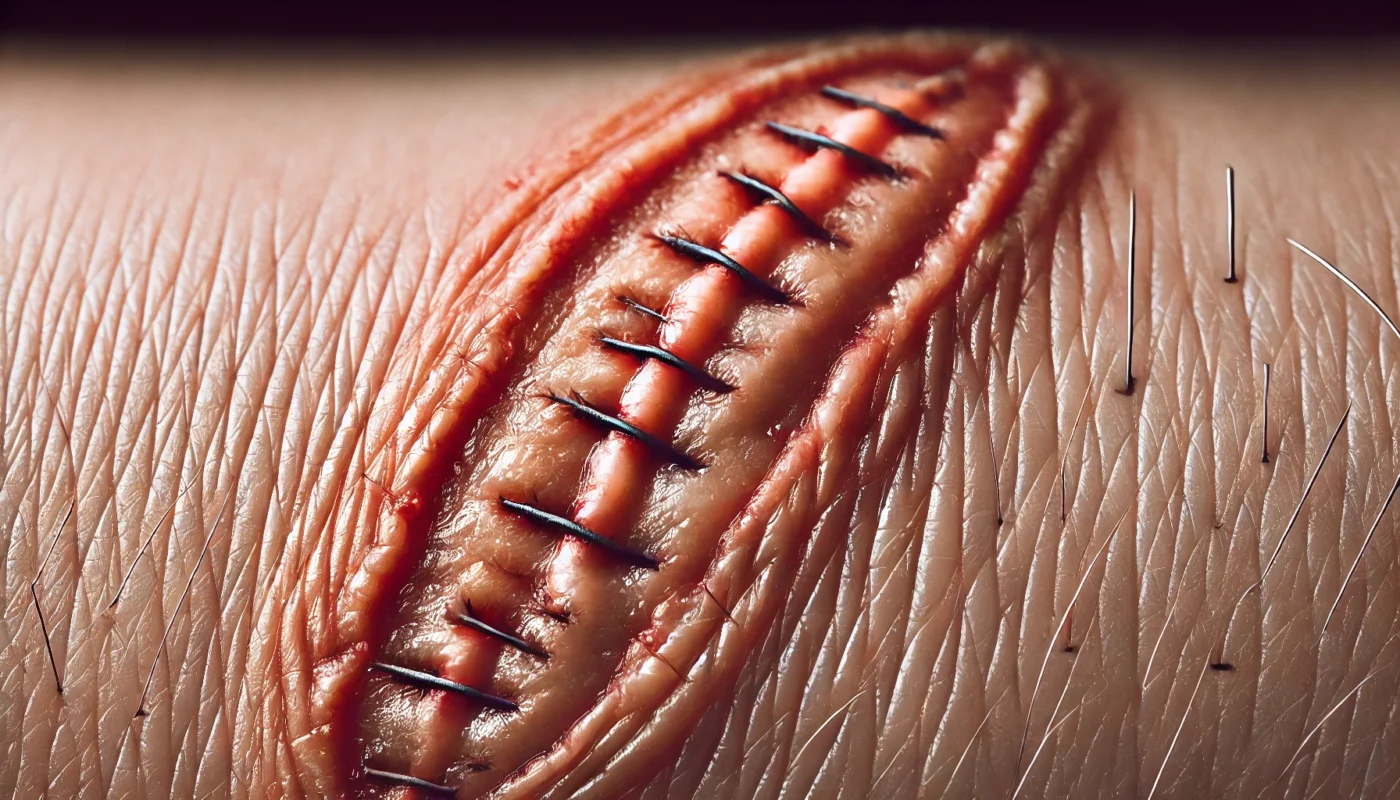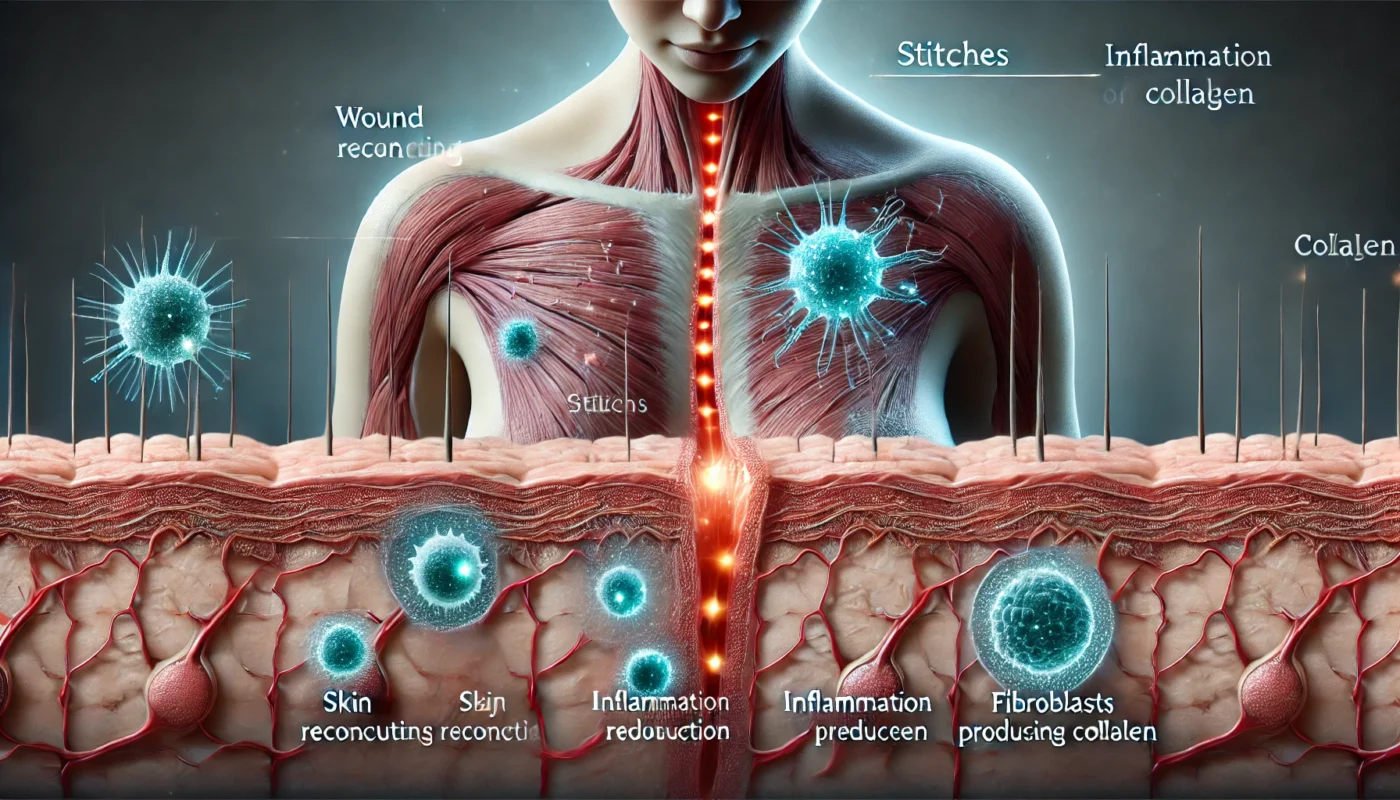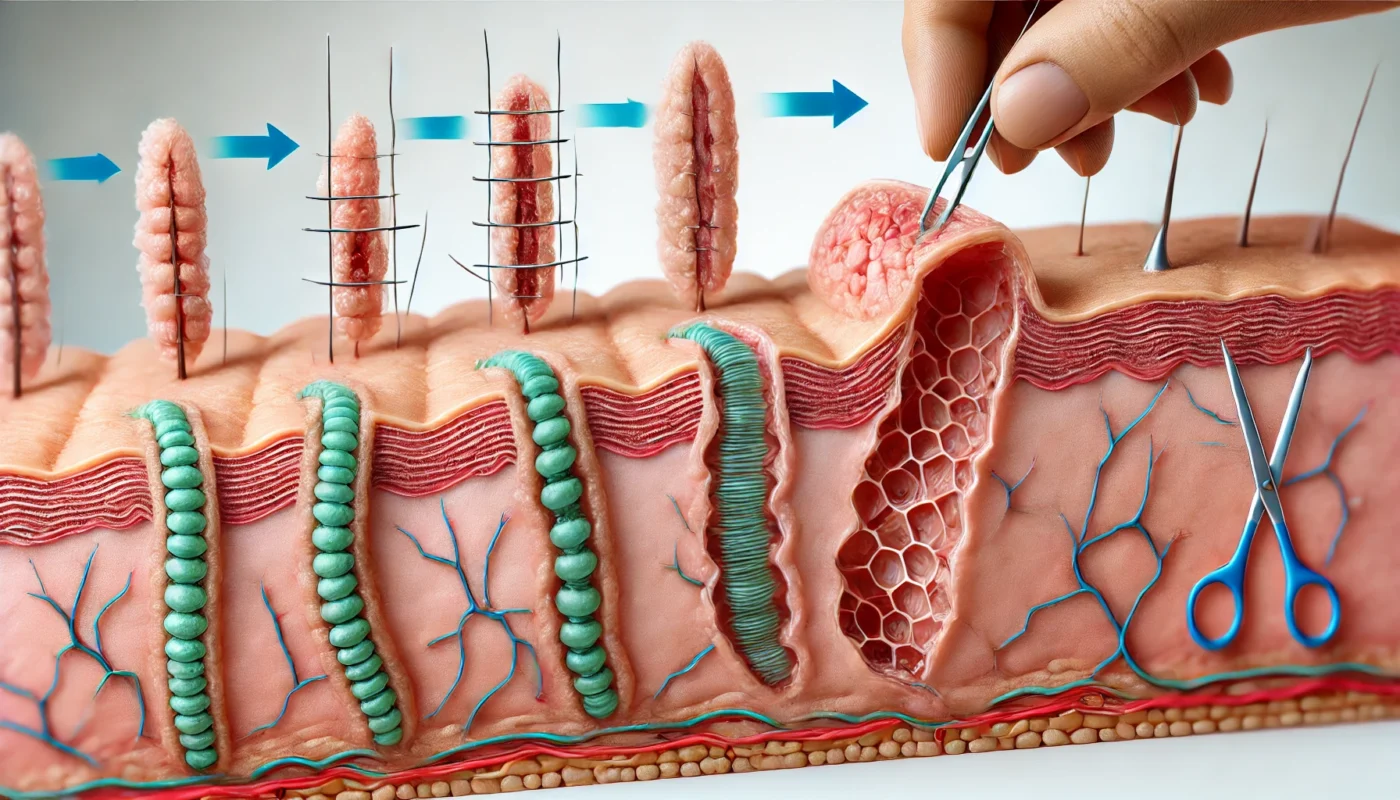The healing journey is a complex biological process that unfolds in several distinct stages. Each stage plays a vital role in restoring the skin’s integrity and function. Let’s explore these phases in detail:
You may also like: Key Factors in Proliferative Wound Healing
Hemostasis: The Immediate Response
Immediately after a wound occurs, the body initiates the hemostasis phase to stop bleeding. Blood vessels constrict, and platelets form a clot to seal the wound. This process is crucial, as it sets the stage for healing by preventing further blood loss and providing a barrier against potential infections.
The Role of Platelets
Platelets are essential components of blood that play a key role in hemostasis. When an injury occurs, they rush to the site to form a plug, sealing off the wound. This action not only prevents excessive bleeding but also forms the initial scaffold for new tissue growth. Understanding this role highlights the importance of maintaining healthy platelet levels for efficient wound healing.
Clot Formation and Stability
The clot that forms during hemostasis is stabilized by a protein network called fibrin. This intricate web not only holds the platelets together but also acts as a temporary framework for incoming cells that will aid in healing. The integrity of this clot is vital, as any disruption can lead to prolonged bleeding and delayed healing.
Preventing Infections Early
Hemostasis also plays a defensive role by forming a physical barrier against pathogens. This immediate response is crucial in preventing bacterial invasion and potential infections. Understanding this aspect emphasizes the importance of prompt wound care, such as cleaning and covering the wound, to support this natural defense mechanism.
Inflammation: Setting the Stage for Healing
The inflammation phase follows hemostasis, typically lasting a few days. During this stage, white blood cells, particularly neutrophils and macrophages, flood the area to eliminate bacteria and debris. This phase is characterized by redness, heat, swelling, and pain—common signs that the body is working to prevent infection and prepare for tissue repair.
The Role of Neutrophils
Neutrophils are the first responders in the inflammation phase. They arrive at the wound site within hours, acting as scavengers to clean up dead tissue and bacteria. Their swift action helps prevent infections and sets the groundwork for subsequent healing stages.
Macrophages and Tissue Repair
Following neutrophils, macrophages arrive to continue the cleanup process. These cells not only engulf debris but also release growth factors that stimulate tissue repair. Macrophages play a dual role by orchestrating the transition from inflammation to the next phase of healing.
Managing Inflammation
While inflammation is a natural part of healing, excessive or prolonged inflammation can hinder recovery. Understanding the signs of excessive inflammation, such as persistent redness or swelling, can help individuals seek timely interventions to facilitate optimal healing.
Proliferation: Building New Tissue
The proliferation phase is where the body begins to rebuild. This stage can last from several days to a few weeks, depending on the wound’s severity and location. Fibroblasts produce collagen, a protein that provides structure and strength, while new blood vessels form to supply oxygen and nutrients. Granulation tissue develops, filling the wound and providing a foundation for new skin.
The Role of Fibroblasts
Fibroblasts are the key architects in the proliferation phase. These cells synthesize collagen and other extracellular matrix components, which provide structural support to the healing tissue. The activity of fibroblasts is crucial in ensuring the wound gains strength and stability.
Angiogenesis and Nutrient Supply
Angiogenesis, the formation of new blood vessels, is a hallmark of the proliferation phase. This process ensures that the healing tissue receives adequate oxygen and nutrients. Understanding angiogenesis highlights the importance of maintaining good circulation to support wound healing.
Granulation Tissue Formation
Granulation tissue is the new tissue that forms over the wound, rich in blood vessels and collagen. This tissue serves as a temporary matrix that supports the migration of skin cells across the wound. Proper granulation is essential for successful wound closure and minimizing scarring.
Maturation: Strengthening the Repair
The final phase, maturation, can last several months to years. During this stage, collagen fibers reorganize, and the wound contracts to reduce its size. The scar tissue that forms becomes stronger and more flexible over time, although it may never fully regain the skin’s original strength and elasticity.
Collagen Remodeling
During maturation, collagen fibers are reorganized and aligned along tension lines. This remodeling enhances the strength and elasticity of the scar tissue, although it may not fully match the original skin. Understanding collagen remodeling can help manage expectations regarding scar appearance.
Wound Contraction
Wound contraction is a process where the wound edges pull together, reducing the wound size. This natural occurrence helps speed up closure and minimizes the area of scarring. Awareness of this process can aid in understanding changes in wound size during healing.
Scar Formation and Appearance
Scar tissue forms as a natural result of wound healing. While it strengthens over time, the appearance of scars can vary based on factors like wound size and location. Knowing about scar formation can help individuals explore treatments, such as silicone gels or laser therapy, to improve scar appearance.

Surgical Wound Healing: A Closer Look
Surgical wounds follow the same healing stages, but with some differences due to the precision and cleanliness of surgical incisions. The controlled environment minimizes infection risks, often leading to quicker healing and less prominent scarring.
Precision of Surgical Incisions
Surgical incisions are made with precision, minimizing tissue damage and promoting cleaner cuts. This precision facilitates more predictable healing, as the wound edges are well-aligned and can reattach seamlessly. Understanding this benefit can reassure patients undergoing surgical procedures.
Reduced Infection Risk
The sterile environment in surgical settings significantly lowers the risk of infections. Surgeons take meticulous steps to ensure that the wound site remains uncontaminated, promoting a smoother healing process. Recognizing this factor highlights the importance of adhering to post-operative care instructions.
Scarring and Aesthetic Considerations
Surgical wounds often result in less prominent scarring compared to other types of wounds. The precise closure techniques and careful post-operative care contribute to improved aesthetic outcomes. Awareness of these factors can help manage expectations regarding scar appearance after surgery.
Factors Influencing Wound Healing
Various factors can impact the rate and quality of wound healing, including:
Age and Healing Capacity
Age can significantly influence healing speed and efficiency. Older individuals may experience slower healing due to decreased skin elasticity and circulation. Understanding this factor underscores the importance of tailored wound care approaches for different age groups.
Nutrition and Its Role
Proper nutrition is crucial for wound healing, as it supports collagen synthesis and immune function. A diet rich in vitamins C and E, zinc, and protein can enhance the body’s ability to repair and regenerate tissue. Recognizing the role of nutrition emphasizes the need for a balanced diet during recovery.
Importance of Hydration
Adequate hydration is essential for cellular function and tissue regeneration. Water supports nutrient transport and waste removal, aiding the healing process. Maintaining optimal hydration levels is a simple yet effective way to enhance wound healing.
Impact of Chronic Conditions
Chronic conditions such as diabetes or vascular diseases can impede blood flow and delay healing. These conditions may require specialized care and monitoring to ensure effective recovery. Understanding this impact can prompt individuals to seek appropriate medical guidance.
Effects of Smoking
Smoking reduces oxygen levels in the blood, impairing the healing process. The chemicals in tobacco can constrict blood vessels and hinder nutrient delivery to the wound. Awareness of these effects can encourage individuals to consider smoking cessation to promote better healing outcomes.

Recognizing Infected Wound Healing Stages
While most wounds heal without complications, infections can occur, disrupting the healing process. Recognizing the signs of infection early is critical for preventing more severe complications. Symptoms of an infected wound include:
Identifying Early Symptoms
Early detection of infection can prevent more serious complications. Increased redness, warmth, or swelling around the wound are key indicators. Understanding these early symptoms can prompt timely medical intervention.
Persistent Pain and Discomfort
Persistent or worsening pain may signal an underlying infection. Unlike normal healing discomfort, infection-related pain often intensifies. Recognizing this difference can help individuals seek medical advice promptly.
Abnormal Discharge and Odor
Pus or unusual drainage from the wound, accompanied by a foul odor, often indicates infection. These signs suggest that the body’s defense mechanisms are overwhelmed. Awareness of abnormal discharge can aid in early infection detection.
Systemic Symptoms
Fever or chills may accompany an infected wound, indicating a systemic response. These symptoms suggest that the infection may be spreading beyond the wound site. Recognizing systemic symptoms highlights the urgency of seeking medical attention.
Practical Tips for Optimal Healing
Achieving optimal healing involves supporting your body’s natural processes while minimizing potential complications. Here are some practical strategies:
Adherence to Medical Advice
Following healthcare provider instructions is crucial for effective wound care. Compliance with prescribed medications and care routines can prevent complications. Understanding the importance of adherence can encourage patients to take an active role in their recovery.
Maintaining Cleanliness and Moisture
Keeping the wound clean and moist promotes faster healing. Gentle cleaning with mild soap and water, coupled with the application of sterile bandages and antibiotic ointment, can support the healing process. Recognizing this approach can enhance wound care practices.
Avoiding Irritants and Stressors
Avoiding harsh chemicals, excessive sun exposure, and activities that may stress the wound is vital. Minimizing exposure to irritants can prevent delayed healing and complications. Understanding these risks can guide individuals in making informed lifestyle choices during recovery.
Incorporating Gentle Movement
Gentle movement and exercise can improve circulation, aiding the healing process. However, avoiding strenuous activities that may put stress on the wound is crucial. Recognizing the balance between movement and rest can optimize healing outcomes.

The Role of Holistic Approaches in Healing
Holistic and alternative approaches can complement traditional medical treatment, offering additional support for wound healing. Techniques such as meditation, acupuncture, and herbal remedies can enhance overall well-being and reduce stress, which may indirectly benefit the healing process.
Meditation and Stress Reduction
Meditation can significantly reduce stress, which can otherwise impair healing. By promoting relaxation and mental clarity, meditation supports the body’s repair mechanisms. Understanding its benefits can encourage individuals to incorporate meditation into their healing routine.
Acupuncture: Enhancing Circulation
Acupuncture may improve circulation and reduce inflammation, supporting the body’s natural healing mechanisms. This practice involves inserting thin needles into specific points on the body to stimulate energy flow. Recognizing its potential benefits can guide individuals in exploring acupuncture as a supplementary therapy.
Herbal Remedies: Nature’s Helpers
Certain herbs, such as aloe vera and calendula, have been shown to possess wound-healing properties. These can be applied topically in ointments or creams, but always consult with a healthcare professional before using herbal treatments. Understanding the role of herbal remedies can provide additional options for supporting wound healing.
Conclusion: Healing is a Journey
Understanding the stages of wound healing and recognizing the factors that influence recovery can empower individuals to take an active role in their healing journey. By combining traditional medical approaches with holistic practices, one can foster an environment conducive to effective and efficient healing.
As you navigate your recovery, remember that healing is a process that requires patience and care. By supporting your body with the right strategies, you can enhance your overall health and well-being, allowing you to return to your everyday activities with confidence and vitality.
Further Reading:
How to Know Your Surgical Cut Is Healing Right
The Healing Stages Of Stitches
How Does My Wound Heal, and How Do I Treat It?
wound healing, smoking cessation, infection prevention, medical advice, holistic healing, stress reduction, acupuncture, herbal remedies, wound care, patient recovery, health and wellness, healing process, circulation improvement, cleanliness, moisture maintenance
Important Note: The information contained in this article is for general informational purposes only, and should not be construed as health or medical advice, nor is it intended to diagnose, prevent, treat, or cure any disease or health condition. Before embarking on any diet, fitness regimen, or program of nutritional supplementation, it is advisable to consult your healthcare professional in order to determine its safety and probable efficacy in terms of your individual state of health.
Regarding Nutritional Supplements Or Other Non-Prescription Health Products: If any nutritional supplements or other non-prescription health products are mentioned in the foregoing article, any claims or statements made about them have not been evaluated by the U.S. Food and Drug Administration, and such nutritional supplements or other health products are not intended to diagnose, treat, cure, or prevent any disease.

